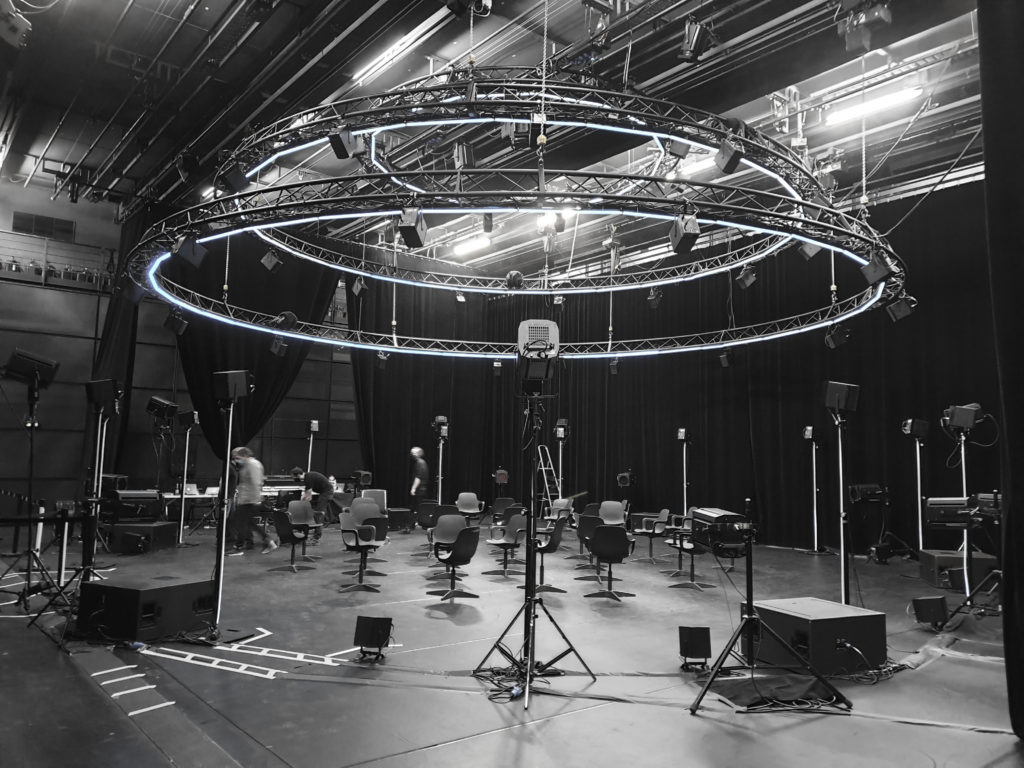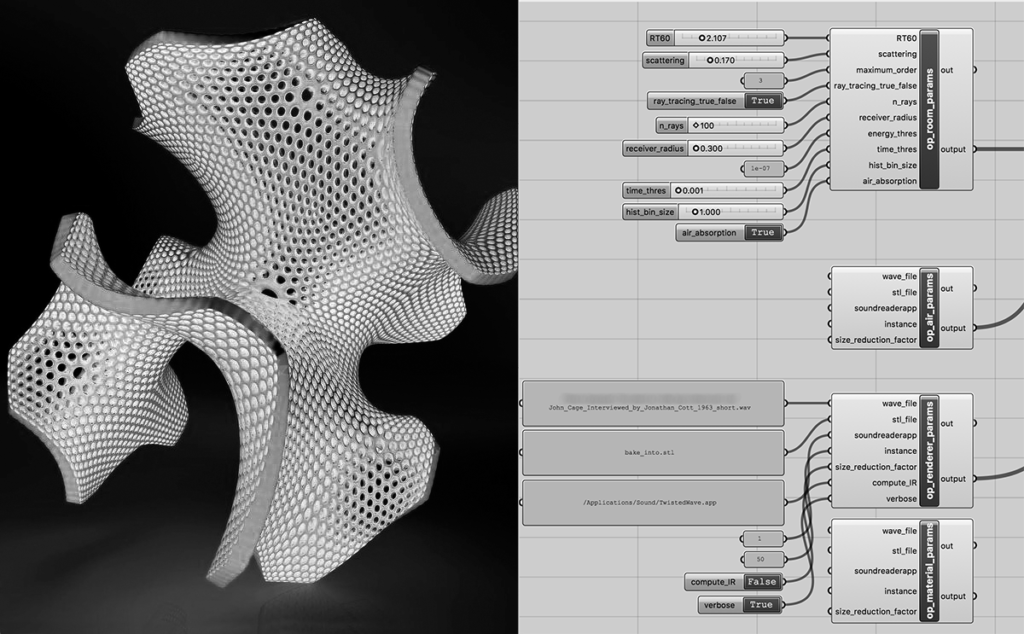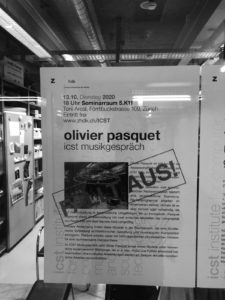
bacchantes setup with led lighting at centre pompidou’s grande salle in sept 2020
10_2020
+++++++++++++++++++++++++++++++++++++++++++++++++++
An artistic path into spatial computing composition for generative music.
keywords: generative music, architecture, composition, artificial creativity, representation, aggregation.
___________________________________
There is a fundamental tension between discrete and continuous computing models. Computing devices are generally discrete, but it is often useful to map them according to the continuous environment in which they are embedded. Aggregated programming models for space computers attempt to resolve this tension in different ways.
I personally see two simple models: the continuous universality of space-time and discrete-field computing.
The primary obvious application of these models is room acoustics, artistically linking architectural design with music composition. The second consists of applying those processes with non-realistic physical characteristics and thus generating space-related sound synthesis. On a bigger scale, the final application links symbolic topological representations together into an object I eventually decide to identify as a composition piece or a base for narrative fiction.
Olivier will describe at ZHdK on October 13th, 2020 some of these concepts using experimental, and fresh, tools he recently has been developing in Max, Rhino and Python. A few relevant applications will be shown in very recent audio and visual pieces of his and future planned productions.
___________________________________
Zwischen diskreten und kontinuierlichen Rechenmodellen besteht eine grundsätzliche Spannung: Rechenprogramme arbeiten im Allgemeinen diskret, oftmals ist es aber sinnvoll oder notwendig, sie auf ihre Einbettung in kontinuierliche Umgebungen hin zu konzipieren. Pasquet begegnet dieser Problemstellung mit zwei einfachen Modellen: der Universalität von Raum-Zeit und dem discrete-field-computing.
Primäre Anwendung finden diese Modelle in der Raumakustik, die eine künstlerische Verbindung architektonischer Gestaltung und musikalischer Komposition ermöglicht. Pasquet arbeitet dabei mit nicht-realistischen physikalischen Grössen für eine raumbezogene Klangsynthese.
Im ICST Musikgespräch wird Olivier Pasquet einige dieser Modelle unter Verwendung experimenteller Werkzeuge, die er in Max, Rhino und Python entwickelt hat, beschreiben. Ihre konkrete Anwendung wird am Beispiel aktueller künstlerischer Arbeiten nachvollziehbar.

rhino grasshopper room simulation using hybrid ray casting and image source modeling. super experimental for now _ olivier pasquet _2020
